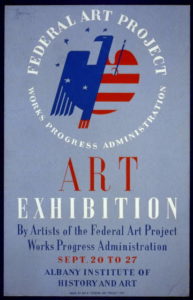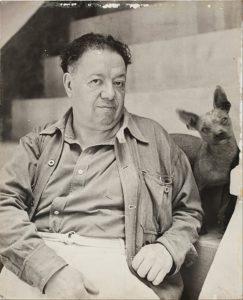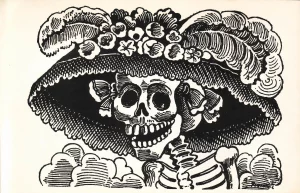Many famous figures have their own quotes about the power of art and its ability to change people’s minds and the world. However, there are few people whose lives have embodied those kinds of sayings than Diego Rivera. Some people know him as a great Mexican artist, while others simply know him as Frida Kahlo’s husband. But it’s important to understand why and how his work changed people’s lives.
Born in Guanajuato in 1886, Rivera showed artistic talent from a young age. Rather prophetically, he started drawing on the walls of his family home. Instead of scolding him, Rivera’s parents covered parts of the walls with canvases and chalkboards to see what he would create. When he was 24 years old, Mexico was plunged into political turmoil and civil war after the overthrow of the dictator Porfirio Díaz. The Mexican Revolution, as this chaotic time came to be known, raged for ten years, killing one in every eight Mexican men in the process. It continued peacefully (relatively) through new governments that implemented reforms hoping to modernize Mexico, from land redistribution to educational secularization.
However, these governments also sought to redefine Mexican identity. They understood that many Mexicans, especially those living in the countryside, felt little connection with people in the cities or other parts of the country. To them, there was no such thing as Mexican national identity. So, the government decided to help create one. The new government, particularly the new education minister José Vasconcelos, made a new Mexico, one that was mixed in its race and heritage; the blending of white European and indigenous American (and to an extent black African) for what became known as “the cosmic race” in Mexico. To express this new identity and promote the changes and new ideas the revolutionary government heralded, they began to commission painters to create public art. This art would serve several purposes, including highlighting the pride in being mestizo, educating the public about Mexico’s long and complicated history, and promoting the new reforms the government wished to implement. This marked the birth of the Mexican muralist movement. The three great figures who emerged from this movement were José Clemente Orozco, David Alfaro Siqueiros, and Diego Rivera.
Rivera was in Paris for much of the Revolution, honing his artistic talents. When the new revolutionary government started planning its mural campaigns, the Mexican ambassador to France reached out to Rivera and urged him to return home. Muralist painters like Rivera took inspiration from various sources to create their new work. They drew from centuries of indigenous wall paintings, the techniques of Renaissance frescos learned in Europe, and political caricatures from pre-revolutionary newspapers like those of José Guadalupe Posada. The old murals found at Mayan and Aztec archaeological sites were of particular influence to Rivera, borrowing their simplified figures and bold colors to express new ideas about nationalism and progress.
Some of Rivera’s most iconic works, and indeed some of the greatest examples of modern Mexican art, were created throughout the 1920s as part of the government’s mural campaigns. These works included decorating the interior walls of the Palacio Nacional, the president’s official residence in Mexico City. One of the building’s main stairwells is now colored floor-to-ceiling with figures from Mexico’s history. From the early conquistadors and Aztec warriors, the Inquisition, the war with the United States, the presidency of Benito Juarez, the French invasion, Porfirio Díaz, and even the great revolutionary leaders like Emiliano Zapata. On the south wall, Rivera even snuck in an image of his wife, Frida Kahlo, in a section often called Mexico Today and Tomorrow.
 Rivera wanted his work to show all of Mexico, which meant it would depict its great leaders and its common people, workers, and peasants. He imbued his work with messages of social progress and the great challenges that will accompany it in the future. In doing so, he spoke not only to Mexico but to all people. This enabled him to travel abroad and create murals in New York and Detroit. Rivera is even credited with inspiring Franklin Roosevelt and his administration to found the New Deal’s Federal Art Project. By observing Rivera, the American government understood how art could affect a distressed population and allocated funds to invest in artists like Ilya Botolowsky, Willem de Kooning, Joseph Stella, Mark Rothko, Jackson Pollock, and Lee Krasner. Without Rivera’s influence, many of the great American painters of the twentieth century, the abstract expressionists in particular, would not have gotten the leg up necessary to launch their careers.
Rivera wanted his work to show all of Mexico, which meant it would depict its great leaders and its common people, workers, and peasants. He imbued his work with messages of social progress and the great challenges that will accompany it in the future. In doing so, he spoke not only to Mexico but to all people. This enabled him to travel abroad and create murals in New York and Detroit. Rivera is even credited with inspiring Franklin Roosevelt and his administration to found the New Deal’s Federal Art Project. By observing Rivera, the American government understood how art could affect a distressed population and allocated funds to invest in artists like Ilya Botolowsky, Willem de Kooning, Joseph Stella, Mark Rothko, Jackson Pollock, and Lee Krasner. Without Rivera’s influence, many of the great American painters of the twentieth century, the abstract expressionists in particular, would not have gotten the leg up necessary to launch their careers.
While Rivera wasn’t the only person responsible for remaking Mexico in a new, revolutionary image, he was undoubtedly one of the most prolific. And he reshaped not only the way Mexico sees itself but also how the entire world sees the country. Just he and Frida Kahlo alone drew an incredible amount of attention to Mexican art, its themes, its symbolism, and its color. He also drew attention to social issues, advanced the interests of the poor, elevated working people through his paintings, and directly or indirectly inspired artists across the globe. Though not a perfect man by any means, art and culture throughout the world, both in its appearance and its purpose, would be unrecognizable today had it not been for a man from Mexico who drew on the walls as a child and just never stopped.


